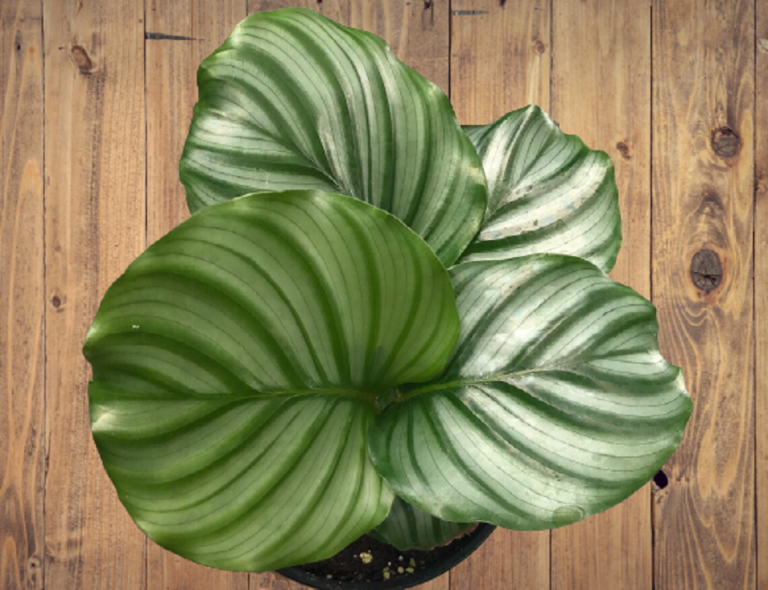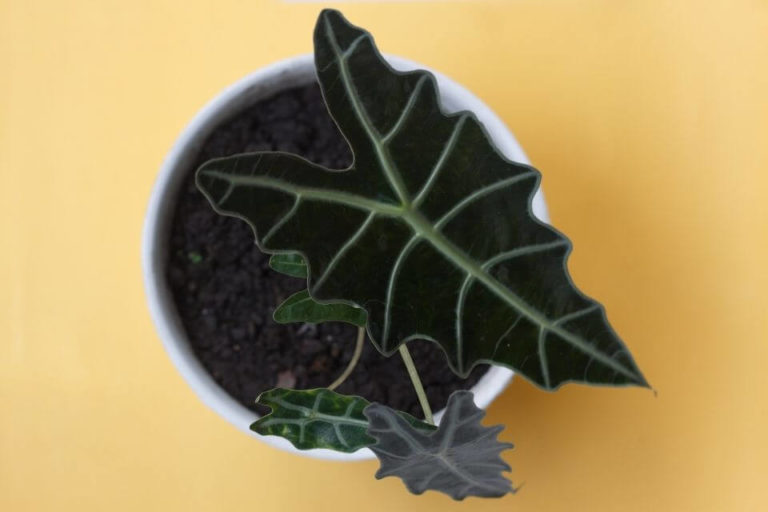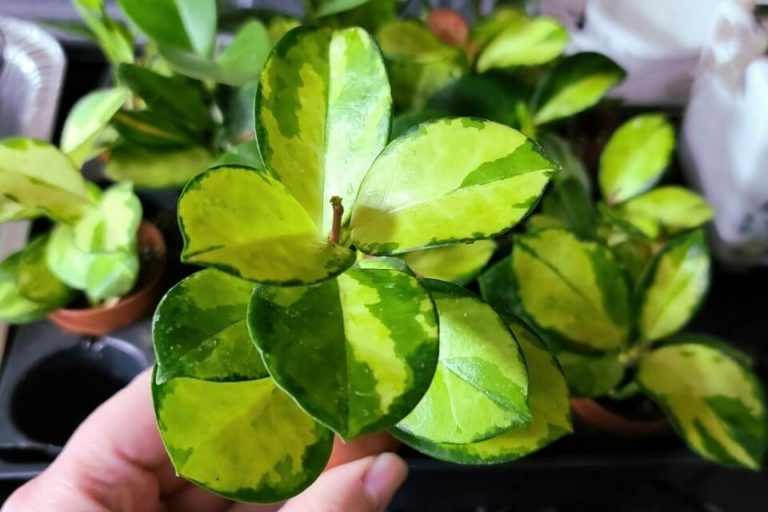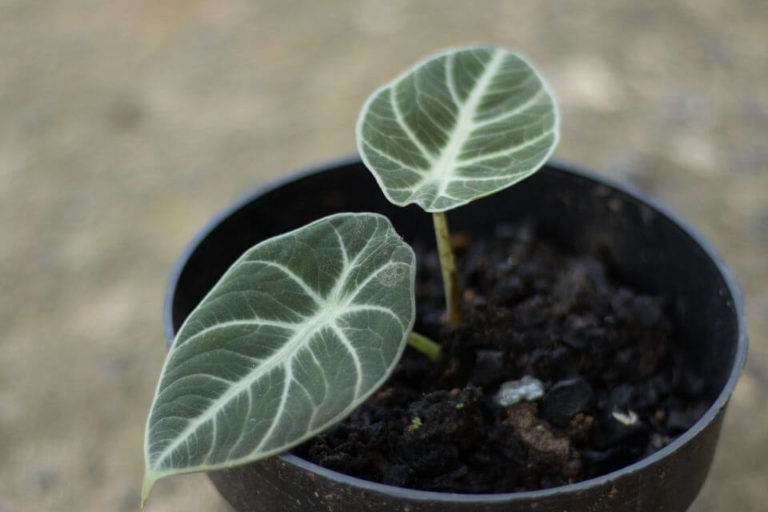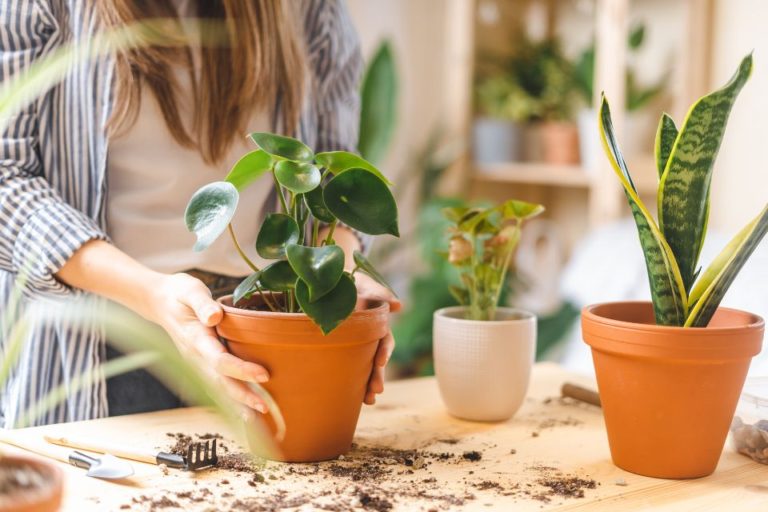Pink Princess Philodendron Care, Grow And Propagation Guide
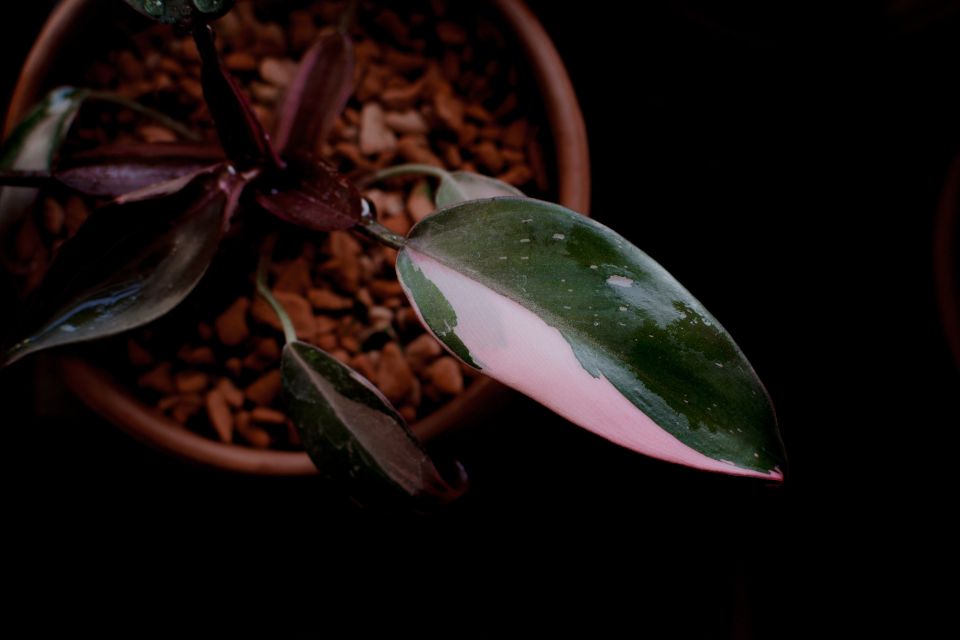
Pink Princess Philodendron plant (Philodendron erubescens) is a beautiful and unique houseplant that is sure to add a touch of elegance to any room.
This plant is easy to care for, but there are a few things you should keep in mind if you want it to thrive. In this guide, we will discuss the care and propagation of the Pink Princess Philodendron.
So, if you are interested in adding one of these plants to your home, keep reading!
TABLE OF CONTENTS
Overview Of Pink Princess Philodendron
Pink Princess Philodendron plant is a beautiful, easy-to-grow houseplant that can brighten up any room. It is known for its stunning pink and green leaves, which can grow up to 4 feet tall and spread up to 2 feet.
The Pink Princess is a climbing plant, so it will need a support system to climb on. It is important to keep the Pink Princess well-watered, but be sure to not over-water it as this can lead to root rot.
Fertilize your Pink Princess monthly with a balanced houseplant fertilizer.
The Pink Princess Philodendron plant is native to the tropical rainforests of South America. It is found in Brazil, Colombia, Ecuador, Peru, and Venezuela. The Pink Princess prefers warm, humid conditions and does not tolerate cold well.
It is an epiphytic plant, which means it grows on other plants or trees. The Pink Princess gets its name from its beautiful, pink flowers.
The Philodendron genus is part of the Araceae family, which contains about 1000 species of plants. Philodendrons are known for their large, heart-shaped leaves and vining habits.
The Pink Princess Philodendron is a very easy plant to care for. It does not require much light or water and can tolerate some neglect. The Philodendron genus is very adaptable and can be found in a wide range of habitats.
Pink Princess is a very popular houseplant and can be found in many homes and offices. It is also available for purchase online or at your local nursery.
Size & Appearance
This plant can reach a height of about 4 feet and a spread of about 24 inches. The leaves are glossy and deeply lobed, with the leaf margins being pink. The petioles are also pink.
It is a fast-growing climber that can quickly cover an unsightly wall or fence. It looks best when allowed to trail over the edge of a pot or hanging basket. The undersides of the leaves are a deep purple. The flowers are small and insignificant.
The stem is also a purplish color. This plant is evergreen, meaning it will keep its leaves all year round. Typically, the appearance of this plant will stay the same, with just some growth in size.
Uses And Placement
The Pink Princess Philodendron can be used as a houseplant, in terrariums, or as part of a dish garden. It is an ideal candidate for hanging baskets due to its long, cascading vines.
The Pink Princess Philodendron can also be trained to climb a totem or trellis. It is a fast-growing plant that can reach up to four feet in length.
The best place to place your Pink Princess Philodendron is in a spot that receives bright, indirect sunlight. This is because the leaves are sensitive to direct sunlight and will burn easily. For instance, you can place it near an east- or west-facing window.
If you cannot provide bright, indirect sunlight, you can grow your Pink Princess Philodendron under fluorescent light. Just make sure to position the light fixture about 12 inches away from the plant.
Pink Princess Philodendron Care & Maintenance
For your Philodendron to thrive, it needs the right environment and maintenance. Caring for a pink Princess philodendron is easy since they are not high-maintenance plants.
This plant is hardy and can tolerate some neglect. However, for optimal growth, they need bright, indirect light and well-draining, slightly acidic soil. Read on for a detailed guide on how to care for your pink Princess philodendron.
– Soil Requirement And Choosing A Pot
As an aroid, the Pink Princess Philodendron does not have any particular soil requirements and can grow in most potting mixes. However, for optimal growth, it is best to use a well-draining potting mix that is slightly acidic.
You can also add some organic matter to the potting mix to help improve drainage.
Below is a recipe for pink Philodendron potting mix:
- 40% peat moss or coco choir: These materials help improve drainage while still retaining some moisture.
- 30% orchid bark: This provides a structure for the roots to grow and also helps with drainage.
- 20% Perlite: This ensures good drainage and aeration.
- 10% worm castings: This adds nutrients and organic matter to the potting mix.
When choosing a pot for your Pink Princess Philodendron, it is important to choose one that is slightly larger than the current pot. This will allow the plant to have enough room to grow and spread out.
It is also important to choose a pot with drainage holes to prevent the plant from becoming waterlogged.
– How To Water Pink Princess Philodendron?
Your Philodendron Pink Princess requires enough water to keep the soil moist, but not soggy. The best way to water your plant is to use the finger test; stick your finger about an inch into the soil, if it feels dry then it’s time to water.
If the soil is still moist, then wait a few days and check again.
When you do water your plant, make sure to use lukewarm water and avoid getting the leaves wet. Water early in the day so that the plant has time to dry out before nightfall.
The goal here is to keep the soil moist, not wet or soggy. If the soil is too wet, it can lead to root rot. You can use a moisture meter to check the moisture level of your soil if you’re unsure.
– Lighting Needs And Exposure
The Philodendron Princess thrives in bright, indirect sunlight but can tolerate some direct sun exposure. If the leaves of your plant are looking yellow or pale, it’s an indication that it’s not getting enough light.
Move your plant to a brighter spot and you should see an improvement within a few days. When it comes to Philodendron plants, more light usually means more growth.
If you want your plant to grow quickly, place it in an area where it will receive bright, indirect sunlight throughout the day. The plant needs a minimum of six hours of bright indirect sun rays to grow and prosper.
If you live in an area with harsh sun rays, then grow the plant under light shade.
– Temperature Level For Optimal Growth
The Pink Philodendron Princess is a tropical plant that grows best in warm, humid conditions. The ideal temperature range for this plant is between 60-85 degrees Fahrenheit.
If the temperature falls below 60 degrees, the leaves of the plant will start to turn brown and drop off. If the temperature rises above 85 degrees, the leaves will begin to scorch and turn yellow.
The growth rate is fastest when the temperature is between 70 to 80 degrees.
The plant cannot tolerate cold temperatures. Be sure to move the plant indoors if the temperature drops below 60 degrees. If you live in an area with cold winters, it is best to keep the plant as a houseplant.
To shelter your plant for the harsh summer, place it in an east-facing window so that it gets indirect sunlight. If the temperature is too hot for your plant, you can mist the leaves to help cool it down.
– Pink Princess Philodendron Humidity Requirements
The humidity levels for a pink princess philodendron should be high, around 60-70%. You can increase the humidity around your plant by grouping plants together, or using a humidifier.
When the humidity levels are too low, the leaves of your plant will start to brown and curl. If this happens, increase the humidity levels as soon as possible.
Another way to provide humidity for your plant is to place the pot on a pebble tray. Fill the tray with water and pebbles, making sure that the water level is below the bottom of the pot. This will allow the plant to wick up moisture as needed.
Misting is also beneficial, but make sure to do so in the morning so that any water droplets have a chance to dry off before nightfall. If the leaves of your plant are constantly wet, this can lead to fungal issues.
– Using Fertilizer
This plant can be fertilized with any good quality, well-diluted fertilizer. It is recommended to use a water-soluble fertilizer that’s high in phosphorus.
Feed your plant once a month during the growing season and every six to eight weeks during the winter. The dose should be lighter if you are feeding your Philodendron more often.
You should be careful not to over-fertilize as this can damage the roots and leave salt deposits on the leaves.
The plant is not a heavy feeder, but during the growing season, you can fertilize it every two weeks with a half-strength solution of fertilizer.
– Pink Princess Philodendron Cutting And Pruning
Regular pruning will keep your Pink Princess Philodendron dense and compact. It will also help prevent it from getting leggy. To prune, simply snip off the stem where you want new growth to occur.
You should prune your plant in spring or summer when it is actively growing.
Pruning also encourages your plant to produce more pink leaves. If you want more pink leaves, simply prune off the green leaves. The more you prune, the pinker leaves your plant will produce.
Be sure to use sharp, clean pruning shears to avoid damaging the plant. And always prune above a node (the point on the stem where leaves attach).
After you’ve made your cut, new growth will quickly emerge. And before you know it, your plant will be fuller and lusher than ever.
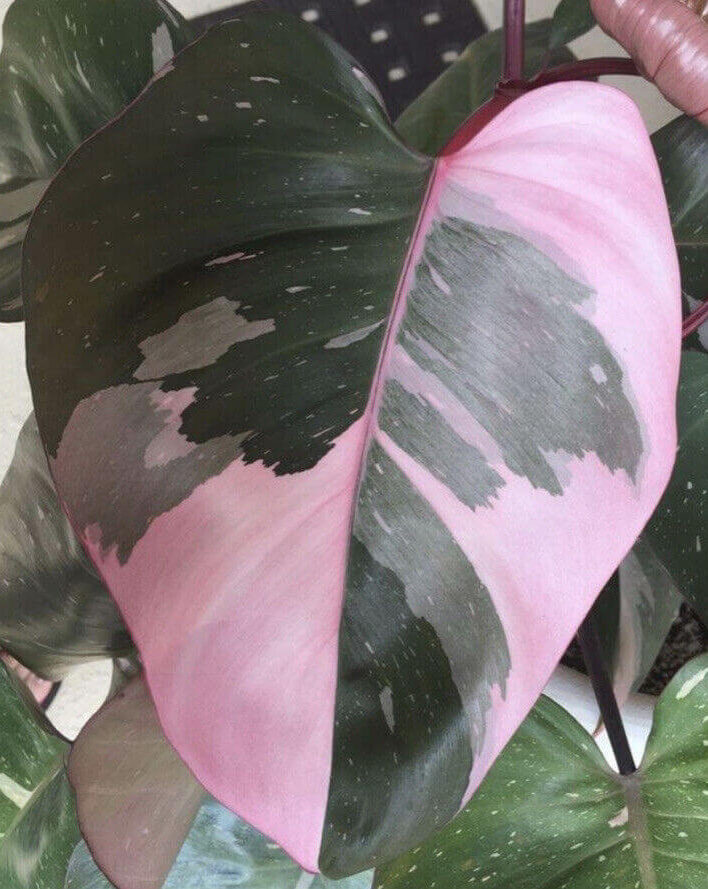
Pink Princess Philodendron Repotting
Philodendron pink princess does best in a well-draining potting mix. Be sure to provide plenty of moisture during the growing season, Terra cotta pots are recommended because they are more breathable.
Re-pot after every one to two years. When repotting be sure to add extra support for the stem. The Pink Princess is a very fast grower and will quickly outgrow its pot if not given enough room to spread.
If you take out a rootball and find that it is going around the perimeter of the pot, then it needs a bigger pot. The best thing to do is to increase the pot size by only a couple of inches at a time.
This means that you can increase the height and diameter by 2 inches. You should not increase the pot size by more than this as it can cause the roots to become waterlogged and this will lead to problems with the plant.
Pink Princess Philodendron Propagation (Step by Step)
The Philodendron Pink Princess can be propagated by stem or leaf cuttings. I will explain both methods in this propagation guide.
Stem Cuttings:
- Choose a stem that is at least 12 inches long and has several leaves.
- Cut the stem just below a leaf node with a sharp knife or pruning shears.
- Remove the leaves from the bottom half of the stem.
- Dip the cut end of the stem in the rooting hormone.
- Fill a pot with well-draining soil and make a hole in the center.
- Insert the stem cutting into the hole and lightly press the soil around it.
- Water the soil and place the pot in a warm, brightly lit area but out of direct sunlight.
- Keep the soil moist but not soggy.
- Roots should form within four to six weeks.
- Once the roots have grown, you can transplant the philodendron into a larger pot.
Leaf Cuttings:
- Choose a healthy leaf from the plant and cut it off with a sharp knife or garden shears.
- Cut just below the leaf node, which is the area on the stem where the leaf is attached.
- The cutting should be at least four inches long.
- Remove the bottom two or three inches of the leaf by cutting it perpendicular to the stem. This will ensure that the cutting can take root more easily.
- Place the leaf-cutting in a jar or glass of water, making sure that the cut end is submerged.
- Put the jar in a spot where it will get indirect sunlight and wait for the cutting to root. This can take anywhere from two to eight weeks.
- Once the cutting has rooted, you can plant it in a pot filled with a well-draining potting mix.
- Water it regularly, and in a few months, you should see new growth.
Common Diseases, And Problems
Princess Philodendron is susceptible to a few common diseases. These include:
Fungal Diseases:
These diseases are caused by fungi and include leaf spots, stem rot, and root rot. Leaf spot is characterized by small, brown spots on the leaves. Stem rot appears as dark, water-soaked lesions on the stem.
Root rot causes the roots to turn brown and mushy. These diseases are often caused by too much moisture.
Bacterial Diseases:
These diseases are caused by bacteria and include crown rot and leaf spot. Crown rot is the most serious of these diseases and can quickly kill your plant. Leaf spot is less serious but can still cause damage to your plant.
Viral Diseases:
These diseases are caused by viruses and include the mosaic virus and leaf roll. Mosaic virus is characterized by yellow or white spots on the leaves. Leaf roll causes the leaves to roll upwards and become brittle.
Both of these diseases are incurable and can be spread by aphids. If you suspect your plant has either of these diseases, it is best to destroy it so as not to spread the disease to other plants.
Leaves Turning Yellow: This is a common problem that can be caused by several factors, including nutrient deficiencies, over-watering, or pests. To counter this, make sure you’re fertilizing regularly and not over-watering your plant.
Brown Edges:
This is usually caused by too much sun exposure. Move your plant to a shadier spot and make sure to protect it from the afternoon sun.
Leaves Curling:
This can be caused by either too much or too little water. Make sure you’re watering your plant regularly and not over-or under-watering it.
Pests:
The most common pests are aphids, mealybugs, scales, and whiteflies. These can all be controlled with regular applications of insecticidal soap or neem oil.
FAQs
What Is Variegated Pink Princess Philodendron?
Variegated Pink Princess Philodendron is a hybrid plant that is a cross between two other philodendron species, the Philodendron erubescens and the Philodendron hederaceum.
The result is a plant that has the best features of both parent plants. The leaves of the Variegated Pink Princess Philodendron are a deep green color with pink and white variegation.
The variegation is more pronounced on new leaves and as the leaves mature, they become greener.
The Variegated Pink Princess Philodendron is a fast-growing plant and can reach lengths of up to 4 to 6 feet (six meters) in the right conditions.
Is Pink Princess Philodendron Toxic To Cats And Dogs?
Yes, the Pink Princess Philodendron is mildly toxic to cats or dogs. However, all parts of the plant are poisonous if ingested, so it is important to keep it out of reach of pets and small children.
If your pet or child does ingest any part of the plant, it is important to seek medical attention immediately.
Do Pink Princess Philodendron Flowers?
The Pink Princess Philodendron has green leaves, pink stems, and white flowers. The plant can reach up to three feet in height and four feet in width.
So, the answer is yes, the Pink Princess Philodendron does flower, though not all varieties of the plant will produce flowers.
Can I Grow Pink Princess Philodendron Under Lights?
Yes, you can grow this plant under artificial lights. However, it is important to note that this plant does best in bright, indirect light. If you are growing your plant under light, make sure to give it a good amount of light each day.
The best light to grow this plant under is a fluorescent light. This light will help the plant to grow healthy and strong.
How Do You Keep Pink Princess Philodendron Pink?
To keep your plant pink, you need to give it bright, indirect light. If the leaves start to turn green, that means it’s not getting enough light. However, too much light will cause the leaves to scorch, so be careful.
Why Is My Plant Getting Leggy?
One of the main reasons philodendrons get leggy is that they are not getting enough light. If your plant is getting long and spindly, it’s time to give it a little more light.
Another reason philodendrons may become leggy is that they are pot-bound. When roots become crowded in a pot, they stop growing and the plant becomes stunted. If your philodendron is leggy, try repotting it in a larger pot.
Why Are Pink Princess Philodendron So Expensive?
One of the main reasons pink Princess Philodendrons are so expensive is due to their limited availability. They’re native to South America and can only be found in a few areas.
Another reason is that they’re difficult to grow. They’re very sensitive to changes in temperature and humidity and can easily die if they’re not cared for properly. Lastly, they’re simply beautiful plants that add a touch of elegance to any home.
Where can I Find Pink Princess Philodendron For Sale?
You can find Pink Princess Philodendron for sale at your local garden center or online. Stores such as Home Depot, Lowe’s, and Walmart sell these plants.
You can also find them at online retailers such as Amazon.com and eBay.
How Much Does A Pink Princess Philodendron Cost?
The cost of a Pink Princess Philodendron can vary depending on the size and location. They typically range from $15-$50. However, if you are buying the plants in bulk, you may be able to get a discount.
What Are The Benefits Of Growing A Pink Princess Philodendron?
There are many benefits to growing a Pink Princess Philodendron. They are easy to care for and can tolerate low light conditions. Additionally, they are known to purify the air and improve indoor air quality.
What Are The Different Varieties of Pink Princess Philodendron?
There are many different varieties of pink Princess philodendron. Some of the most popular include:
- Philodendron Pink Congo: This variety has dark green leaves and light pink leaves with pink veins. The leaves are oval-shaped and can grow up to 18 inches long.
- Pink Brasil: This variety has bright green leaves with pink veins. The leaves are oval-shaped and can grow up to 12 inches long.
- Pink Princess: This variety has dark green leaves with pink veins. The leaves are heart-shaped and can grow up to 12 inches long.
- Emerald Ripple Pink: This variety has dark green leaves with pink veins. The leaves are rippled and can grow up to 12 inches long.
Final Thoughts
The pink princess philodendron is a beautiful, easy-to-care-for plant that makes a great addition to any home. The plant freshens up any room and is known to help purify the air.
If you are looking for a striking, low-maintenance plant, the pink princess philodendron is a perfect choice. It is important to remember that this plant is poisonous if ingested, so keep it out of reach of children and pets.
With proper care, they will thrive and provide you with years of enjoyment. Be sure to follow the tips in this guide to ensure your plant stays healthy and happy. Thanks for reading and good luck with your new plant!


